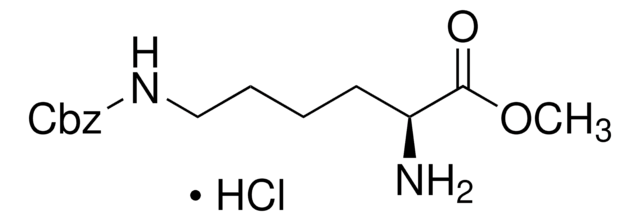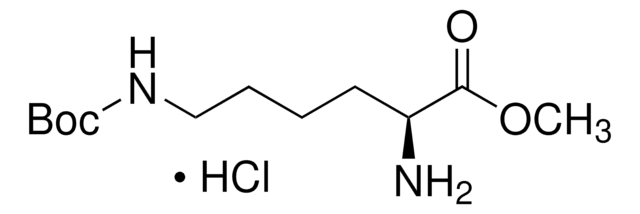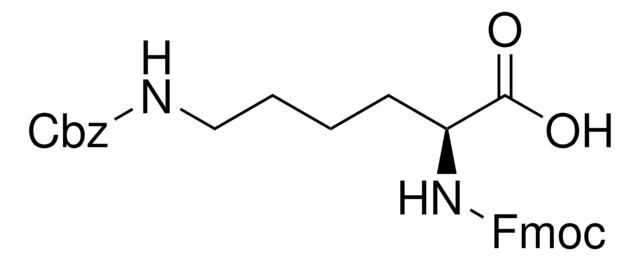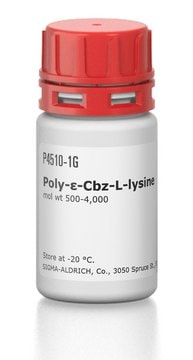推荐产品
product name
H-Lys(Z)-OH, ≥99.0% (NT)
化驗
≥99.0% (NT)
形狀
powder
光學活性
[α]20/D +15.5±1°, c = 1% in 1 M HCl
反應適用性
reaction type: solution phase peptide synthesis
mp
259 °C (dec.) (lit.)
應用
peptide synthesis
SMILES 字串
N[C@@H](CCCCNC(=O)OCc1ccccc1)C(O)=O
InChI
1S/C14H20N2O4/c15-12(13(17)18)8-4-5-9-16-14(19)20-10-11-6-2-1-3-7-11/h1-3,6-7,12H,4-5,8-10,15H2,(H,16,19)(H,17,18)/t12-/m0/s1
InChI 密鑰
CKGCFBNYQJDIGS-LBPRGKRZSA-N
正在寻找类似产品? 访问 产品对比指南
一般說明
H-Lys(Z)-OH also known as N6-carbobenzyloxy-L-lysine, commonly used as a reagent in the synthesis of peptides.
應用
H-Lys(Z)-OH serves as a reactant for the synthesis of various peptides such as boc-Glu(OBzl)-Lys(Z)-OH and tert-butyl-6-(((benzyloxy)carbonyl)amino)-2-bromohexanoate. Additionally, it is used in the Fuchs-Farthing method to synthesize lysine NCA, which is a block copolymer.
儲存類別代碼
11 - Combustible Solids
水污染物質分類(WGK)
WGK 3
閃點(°F)
Not applicable
閃點(°C)
Not applicable
個人防護裝備
Eyeshields, Gloves, type N95 (US)
其他客户在看
Poly (ethylene glycol)-b-poly (lysine) copolymer bearing nitroaromatics for hypoxia-sensitive drug delivery
T Thambi
Acta Biomaterialia, 29, 261-270 (2016)
Preparation of protected peptide intermediates for a synthesis of the ovine pituitary growth hormone sequence 96-135
SS Wang
The Journal of Organic Chemistry, 40, 1227-1234 (1975)
Synthesis and characterization of pH-sensitive, biotinylated MRI contrast agents and their conjugates with avidin
SM Vibhute
Organic & Biomolecular Chemistry, 11, 1294-1305 (2013)
J Zheng et al.
Biotechnology progress, 16(2), 254-257 (2000-04-08)
Poly(epsilon-CBZ-L-lysine) can be mixed with biodegradable polymers such as poly(D,L-lactic-co-glycolic acid) or poly(L-lactic acid) and formed into films, foams, or microspheres. Surface amino groups may then be deprotected with acid or lithium/liquid ammonia. The amino groups serve as a method
J Zheng et al.
Biotechnology progress, 15(4), 763-767 (1999-08-12)
Microspheres were formed from blends of the biodegradable polymer poly(DL-lactic-co-glycolic acid) (PLGA) together with poly(epsilon-CBZ-L-lysine) (PCBZL) by a double-emulsification/solvent evaporation technique. The size of the microspheres formed by this method was dependent both on the total concentration of the polymers
我们的科学家团队拥有各种研究领域经验,包括生命科学、材料科学、化学合成、色谱、分析及许多其他领域.
联系技术服务部门








